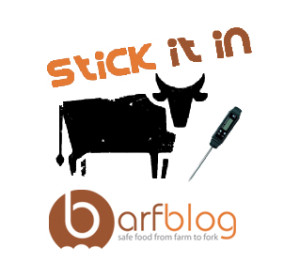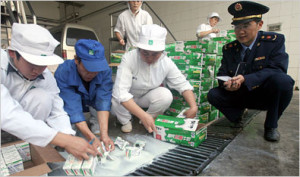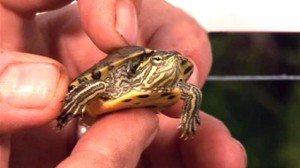Michael Moss of the NY Times writes that at a remote research center on the Nebraska plains, scientists are using surgery and breeding techniques to re-engineer the farm animal to fit the needs of the 21st-century meat industry. The potential benefits are huge: animals that produce more offspring, yield more meat and cost less to raise.
 There are, however, some complications.
There are, however, some complications.
Pigs are having many more piglets — up to 14, instead of the usual eight — but hundreds of those newborns, too frail or crowded to move, are being crushed each year when their mothers roll over. Cows, which normally bear one calf at a time, have been retooled to have twins and triplets, which often emerge weakened or deformed, dying in such numbers that even meat producers have been repulsed.
Then there are the lambs. In an effort to develop “easy care” sheep that can survive without costly shelters or shepherds, ewes are giving birth, unaided, in open fields where newborns are killed by predators, harsh weather and starvation.
Last Mother’s Day, at the height of the birthing season, two veterinarians struggled to sort through the weekend’s toll: 25 rag-doll bodies. Five, abandoned by overtaxed mothers, had empty stomachs. Six had signs of pneumonia. Five had been savaged by coyotes.
“It’s horrible,” one veterinarian said, tossing the remains into a barrel to be dumped in a vast excavation called the dead pit.
These experiments are not the work of a meat processor or rogue operation. They are conducted by a taxpayer-financed federal institution called the U.S. Meat Animal Research Center, a complex of laboratories and pastures that sprawls over 55 square miles in Clay Center, Neb. Little known outside the world of big agriculture, the center has one overarching mission: helping producers of beef, pork and lamb turn a higher profit as diets shift toward poultry, fish and produce.
Since Congress founded it 50 years ago to consolidate the United States Department of Agriculture’s research on farm animals, the center has worked to make lamb chops bigger, pork loins less fatty, steaks easier to chew. It has fought the spread of disease, fostered food safety and helped American ranchers compete in a global marketplace.
But an investigation by The New York Times shows that these endeavors have come at a steep cost to the center’s animals, which have been subjected to illness, pain and premature death, over many years. The research to increase pig litters began in 1986; the twin calves have been dying at high rates since 1984, and the easy care lambs for 10 years.
The center’s parent agency, the Agriculture Department, strictly polices the treatment of animals at slaughterhouses and private laboratories. But it does not closely monitor the center’s use of animals, or even enforce its own rules requiring careful scrutiny of experiments.
As a result, the center — built on the site of a World War II-era ammunition depot a two-hour drive southwest of Omaha, and locked behind a security fence — has become a destination for the kind of high-risk, potentially controversial research that other institutions will not do or are no longer allowed to do.
“They pay tons of attention to increasing animal production, and just a pebble-sized concern to animal welfare,” said James Keen, a scientist and veterinarian who worked at the center for 24 years. “And it probably looks fine to them because they’re not thinking about it, and they’re not being held accountable. But most Americans and even livestock producers would be hard pressed to support some of the things that the center has done.”
Dr. Keen approached The Times a year ago with his concerns about animal mistreatment. The newspaper interviewed two dozen current and former center employees, and reviewed thousands of pages of internal records obtained under the Freedom of Information Act.
That reporting shows that the center’s drive to make livestock bigger, leaner, more prolific and more profitable can be punishing, creating harmful complications that require more intensive experiments to solve. The leaner pigs that the center helped develop, for example, are so low in fat that one in five females cannot reproduce; center scientists have been operating on pigs’ ovaries and brains in an attempt to make the sows more fertile.
And lots more at http://www.nytimes.com/2015/01/20/dining/animal-welfare-at-risk-in-experiments-for-meat-industry.html?hp&action=click&pgtype=Homepage&module=photo-spot-region®ion=top-news&WT.nav=top-news&_r=3
 Personal trainer Gizela Tahuri, who had not eaten McDonald’s for two years previously, said the ordeal reminded her why.
Personal trainer Gizela Tahuri, who had not eaten McDonald’s for two years previously, said the ordeal reminded her why. “We are disappointed that this has happened. We take food safety very seriously and have strict processes and systems in place.”
“We are disappointed that this has happened. We take food safety very seriously and have strict processes and systems in place.”








